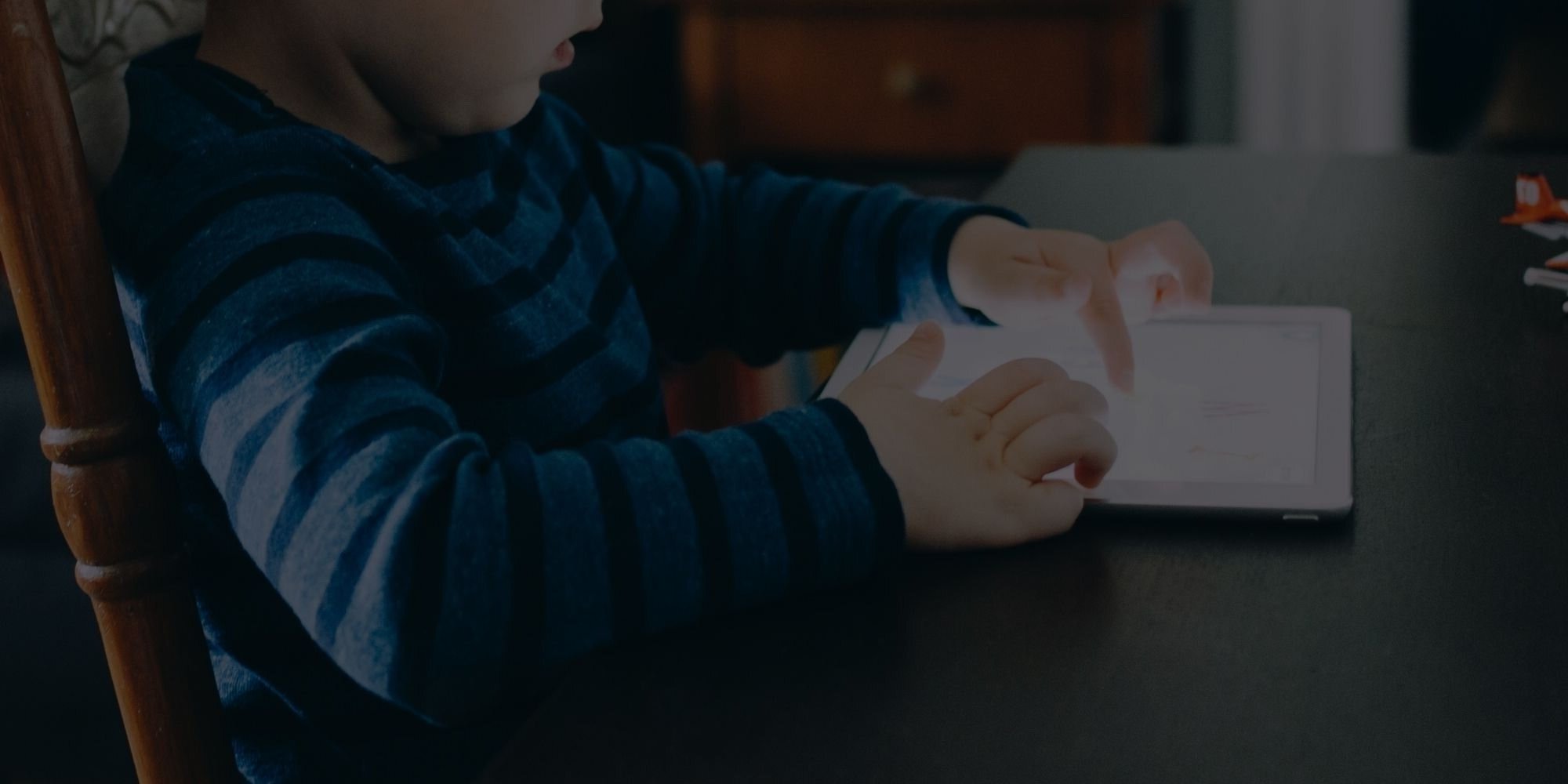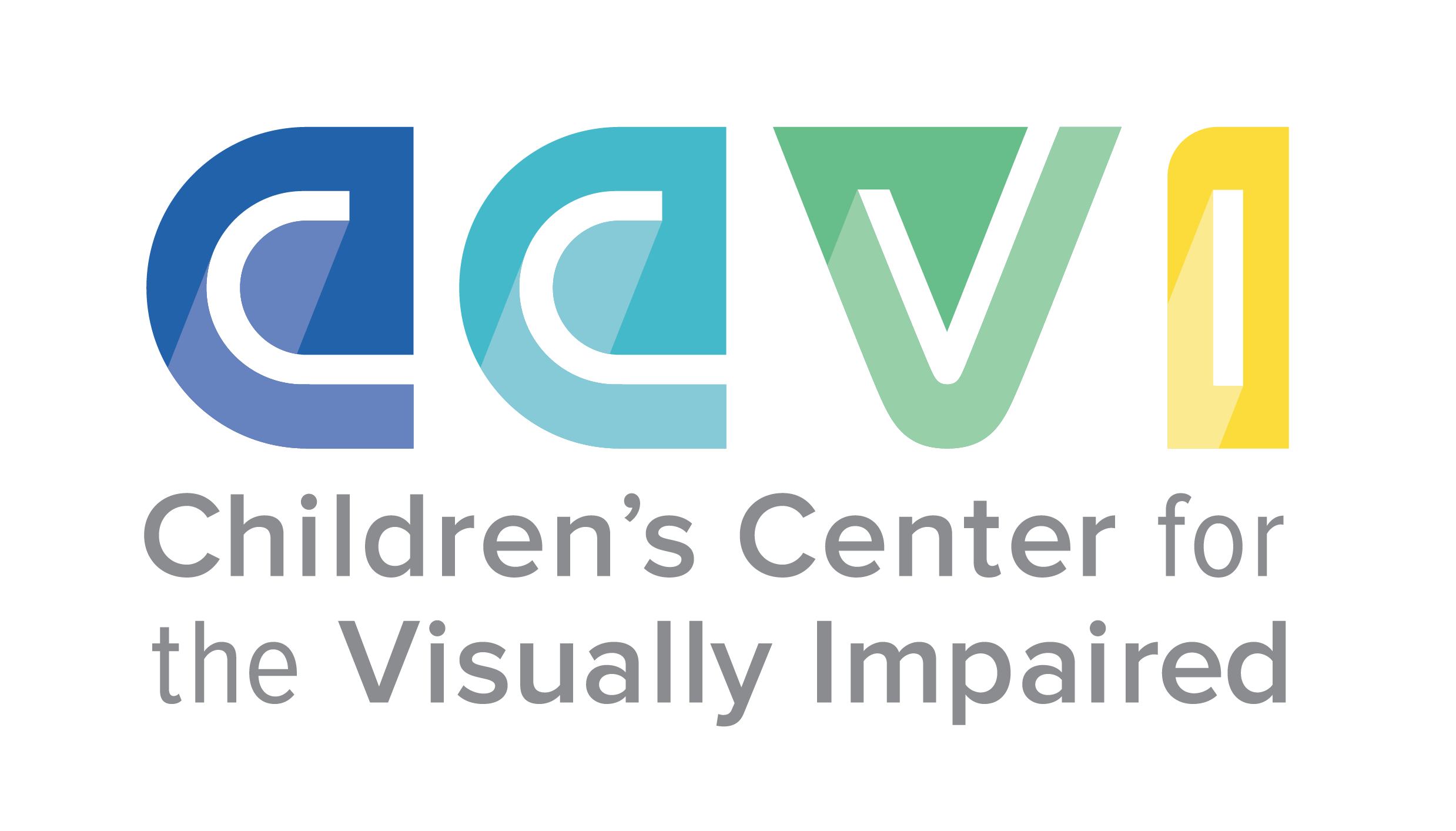
Care meets understanding
OVERVIEW
Every child has different needs and abilities. CCVI offers a wide variety of specialized services, tailormade to increase confidence, build towards benchmarks, and promote exploration. Each therapy program is under the instruction of a certified professional and designed to help children reach their highest potential.
CCVI staff includes professionals in occupational, speech-language, and physical therapies, as well as in the specialized instruction areas of Braille, aquatic therapy, and orientation and mobility.
Every child that receives therapy at CCVI has a visual impairment. Therapies are only provided based on the recommendations of a child's educational plan. This care is detailed in an IEP or IFSP. Privately paying families can incorporate therapeutic instruction into the child's goal plan. If you are interested in a child receiving services, contact your medical provider or your early childhood education coordinator through your school district or state to see if they are partnered with CCVI. Services are paid for by either the school district, state, or parent. Local school districts may contract for CCVI preschool and kindergarten services, according to their district guidelines.
Therapeutic services are often the link between different programs throughout the organization. The common denominator for a child to receive therapy or specialized services from CCVI is the presence and diagnosis of a visual impairment. While CCVI serves children with multiple disabilities, a visual impairment is present in all cases.
how to receive services
Many children enrolled in the Early Learning Academy receive therapy instruction as an integrated part of their classes at the Children’s Center Campus. Infants in the Early Intervention Program can even receive therapy from a young age in their home. Most students are referred to CCVI by a medical professional, a school district, or state organization, whether the Kansas Infant-Toddler Services or the Missouri First Steps Program.
Specialized Services relating to vision for kids beyond infant, toddler, and preschool age may be available through the Mobile Outreach for Vision Education (MOVE) Program (see below). This program is a contracted partnership between select school districts without specialized Teachers of the Visually Impaired to provide services.
Interested in learning more about how a child attends CCVI? Find out how to receive a CCVI vision evaluations.

Physical Therapy
Physical Therapists (PTs) work on skills that include a child’s ability to assume and maintain postures and perform movements. PTs specialize in improving gross motor strength, balance, and coordination. They may work on a child’s ability to roll, sit, crawl, walk, run, perform ball handling skills, jump, climb, or ride a tricycle. PTs may also recommend mobility and positioning devices for home, community, and classroom use.
OCCUPATIONAL THERAPY
Occupational Therapists (OTs) study the development and activities of people from birth throughout different stages in life. At CCVI, OTs focus on functional hand use to help support a child’s play, self-care, fine motor, visual motor, and sensory development. These tasks include tasks like cutting, lacing, eating, dressing independently, typing, coloring, handwriting, and more. Additionally, many students struggle with sensory regulation or sensory aversions. Those that struggle with sensory regulation may be overly active, have difficulty attending to tasks, or display perseverative self-stimulation behavior (rocking). Sensory aversions among populations of individuals with visual impairments may include sensitivities to various tactile media (squishy, scratchy, etc.). OTs assist children in improving assess to assistive technology, and work on feeding skills from sensory and self-help perspectives. The goal of this service is to help students feel more confident exploring the world.
ORIENTATION AND MOBILITY
Orientation and Mobility (O&M) teaches a person with vision loss to travel efficiently, safely, and independently. An O&M instructor teaches the student to focus on and accurately interpret sensory information available in the environment. In many cases, O&M utilizes a white cane or teaches pre-white cane skills. This tool helps facilitate the process of traveling safely. Orientation is the ability to know a current location, identify a destination, and plan a route to connect the two. Through Orientation and Mobility instruction, an individual can plot and maintain a map that incorporates environmental clues and landmarks as supplements to their vision capabilities. An Orientation and Mobility session seeks to replicate real world situations, whether that is navigating a busy street, strolling in a park, or walking up and down stairs. Certified Orientation and Mobility Specialists understand how various diagnoses affect a person’s ability to accomplish tasks through travel. This service is not rooted in rehabilitation like physical or occupational therapy; it is based on the current ability of the student.
SPEECH-LANGUAGE
Speech-Language Pathologists (SLPs) work on a variety of communication skills for children with and without visual impairments. These skills can include speech articulation, voice production, language vocabulary and grammar, understanding basic language concepts, feeding, swallowing, and social aspects of communication. SLPs help support the need for auditory and tactile compensatory strategies and promote braille and print literacy. For students with more complex challenges, and in cases where a child has multiple disabilities, an SLP can help provide augmentative communication training using tactile sign language, tactile symbols, or communication devices. Another crucial element of Speech-Language Pathology is the expert practice of assessing for high and low tech augmentative and alternative communication devices. When a child arrives at CCVI with speech or language deficits, this helps them articulate their thoughts and feelings. These alternative and augmentative communication devices (AACs) often connect images or symbols to words that are verbalized electronically. AAC devices have been known to increase participation in school, allow for social interactions, and help students express themselves.
AQUATIC THERAPY
One of the most noteworthy resources at the Children’s Center Campus is the therapeutic pool. It is used in support of physical and occupational therapy services. The pool contains three different depths, includes stairs, and a zero-entry ramp. Utilizing the unique properties of the water (including buoyancy, resistance, and hydrostatic pressure) can increase functional outcomes in a motivating environment. The properties of the water can have positive influences on muscle tone, strength and control, flexibility, pain management, and overall fitness. Aquatic Therapy is beneficial to children with visual impairments due to its rich sensory feedback — the use of moving water increases visual attention and promotes ease of movement in a reduced gravity environment.
M.O.V.E. Program
Students looking for therapeutic or specialized services to be provided onsite within their district schools can join the Mobile Outreach for Vision Education (M.O.V.E.) Program. This allows children to receive one-on-one services without enrolling in the Early Intervention or Early Learning Academy, based on the recommendation and guidance of an individualized educational plan. No matter which stage of the education process a child is at, certified professionals with direct experience serving individuals with visual impairments are available to attach body-oriented goals to a learning plan. The MOVE program provides specialized services to school districts on a contract basis for individuals with visual impairments (age 3-21). This comprehensive partnership brings CCVI therapists, specialists, and educators with focuses on visual impairment into the building of the student’s home district.

Meet the Program Director
Danielle joined the CCVI staff in 2010 as a physical therapist and now oversees the center-based therapy and early intervention teams. She has practiced in various pediatric settings across the country beginning work as a physical therapist in 1998. Danielle earned her post-professional Doctor of Physical Therapy and is certified in Neuro-Developmental Treatment for the management of and treatment of children with cerebral palsy and other neuromotor disorders.
Assistive Technology
Just as an Initial Functional Vision Evaluation creates a trail for a child to follow through their educational career, an Assistive Technology Evaluation helps provide a child the necessary assistive technology to provide compensatory relief. This assessment can be performed separate from the other evaluations offered at CCVI. Assistive technology is not only implemented into the expanded core curriculum but also into therapeutic services. CCVI is supported by an assistive technology practitioner who provides individual strategies. This specialist even leads a ‘Tech Time’ session with older students. By embracing digital tools, CCVI helps children learn to use braille writers, screen readers, alternative and augmentative communication devices, and more.

“If you ever get the chance to be a part of CCVI, jump with both feet.”








